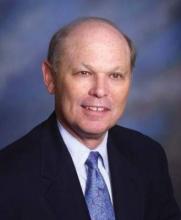As a profession, I think it’s fair to say that dermatology has done a good job welcoming women and including them into this field of medicine. But how many of your physician colleagues are African Americans? How many are Latinos or Latinas?
Does the diversity of your clinician colleagues reflect our patient population? The 2013 census shows that 13.2% of Americans are African American and 17.1% are Latino. Because these populations are not represented in medicine at anything like these percentages, African American and Latino physicians are referred to as underrepresented in medicine (UIM).
A brochure for an upcoming medical conference states that by 2050, “half of the U.S. population will have skin of color.” This may well become a fact. But I argue that a professional workforce that is as diverse as the population we care for is a much better workforce.
I serve as the interim dean of the University of California, San Francisco (UCSF) School of Medicine, which is one of the great medical schools in the United States. The school has 632 students – 26% from underrepresented minorities, and 56% women – the most diverse student group in California and perhaps the United States. There are 2,180 full-time faculty members but less than 2% are underrepresented in medicine. The annual operating budget is more than $2 billion and the school is No. 1 in National Institutes of Health funding. But there are some important shortcomings.
Three things happened after I took the job as interim dean last year. First, the accrediting body of medical schools, the Liaison Committee on Medical Education, served us with a citation for our hiring practices and the lack of diversity among our faculty.
Second, I ran into something called the “climate survey.” We have all heard about climate change, but have you heard of a “climate survey”? No, it’s not an opportunity to complain about too much snow in Boston and too little water in San Francisco. People on every University of California campus were asked if they felt included in the organization that they worked in. Did they feel comfortable? Did they feel part of the club?
The UC survey found that at UCSF and its sister institutions, people from groups underrepresented in medicine – mainly Hispanics and African Americans, whether they were faculty, staff, or students – felt less comfortable than did their white counterparts. They did not feel our climate was inclusive. That’s not the same as being specifically excluded. It’s about not being included.
Third, there were the racially charged events in Ferguson, Missouri, and in Staten Island, New York, and the way our students responded to them. On December 9, 2014, our students organized a “die-in” protest to demonstrate their concern about racism in health care in our country. They called it WhiteCoats4BlackLives. So here I was, the dean of a medical school, and I find all of our students lying down in the street on campus in a very peaceful but profoundly moving demonstration to protest racism. Not only did our students protest at UCSF, they instigated the same WhiteCoats4BlackLives protest simultaneously at 83 medical schools across the country.
I recalled my own student days when we protested public events, and university administrators responded. But this time, as dean of medicine, I was the administrator. It gave me pause to think: What did those three pieces of evidence tell me? They made it clear that race matters. Once that realization finally became clear to me, the question was, what do we do? We were a few weeks away from our annual leadership retreat. The topic was going to be “strategic partnerships.” I sat down with the vice deans and said: Let’s talk about race instead.
And we did, and it turned into an amazing discussion. Just one example: Before the retreat, all of us took the Implicit Associations Test for race. This is a test designed to detect unconscious bias, the kind of bias we are not even aware of. Like me, many of us who considered ourselves fair and unbiased were shocked at the results. We were unconsciously biased for white people and against people of color.
Nicholas Kristof talked about this in the Feb. 21, 2015, edition of The New York Times, in a piece called “Straight Talk for White Men.” It’s worth reading the whole piece, but a study he cited especially struck me. Two scholars sent out fictitious résumés in response to help-wanted ads. Each résumé was given a name that sounded stereotypically black or white. The résumés were otherwise the same.


